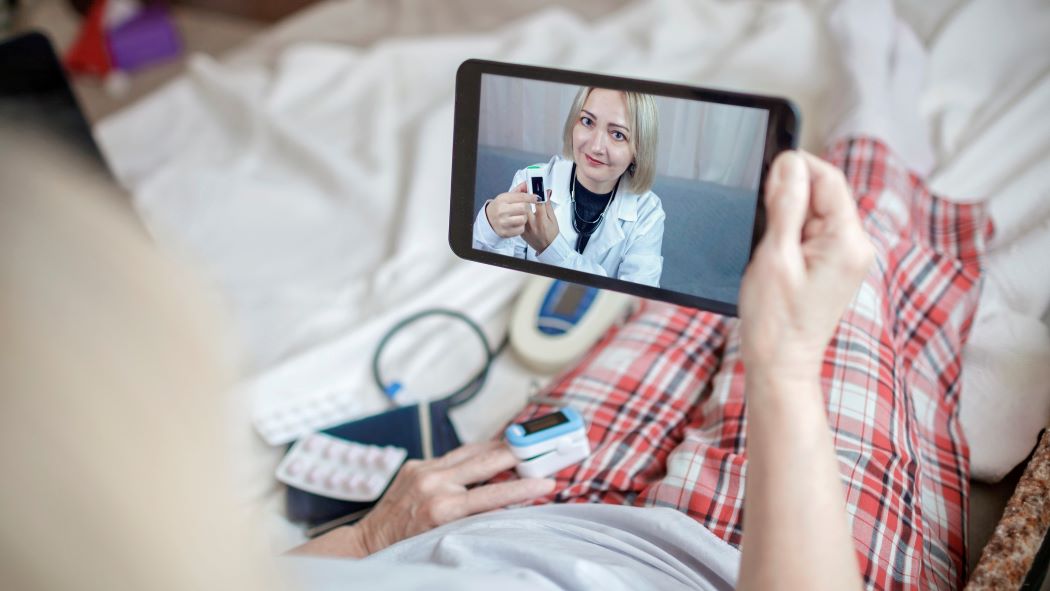To better understand the virtual care landscape we sat down with Dr. William Lopez, national medical director for virtual care at Evernorth, Cigna Corporation’s health services business. Read on to get some insights around how virtual care will augment and complement the health care experience.

It’s no secret that digital technology has the power to completely reshape the health care industry. Namely, virtual care options such as telehealth and remote patient monitoring, can help to make health care more affordable, convenient and seamless.
That’s why MDLIVE, an Evernorth company offering convenient and affordable virtual healthcare services, has rolled out a patient health monitoring program, giving patients and the providers that care for them better insights into their daily health. The strategy behind this program is to improve health outcomes for the millions of Americans living with chronic health conditions like diabetes, heart disease or high blood pressure.
The new program is available to all Cigna customers who are enrolled in employer-sponsored plans. For customers who have used MDLIVE virtual primary care, participating providers are able to identify the patients who could benefit from tracking and reporting their key biometrics such as blood pressure, weight, and glucose levels, which will be reviewed during their visits. MDLIVE plans to expand the program later in the year with the integration of digital devices that can transmit patient data automatically to the MDLIVE patient portal.
 To better understand the virtual care landscape and how this announcement will impact plan sponsors, patients, and the industry as whole, we sat down with Dr. William Lopez, national medical director for virtual care at Evernorth, Cigna Corporation’s health services business. Read on to get some insights around how virtual care will augment and complement the health care experience.
To better understand the virtual care landscape and how this announcement will impact plan sponsors, patients, and the industry as whole, we sat down with Dr. William Lopez, national medical director for virtual care at Evernorth, Cigna Corporation’s health services business. Read on to get some insights around how virtual care will augment and complement the health care experience.
Help me understand what we mean when we say virtual care.
Virtual care is a broad term that encompasses all the ways in which providers can interact with their patients to address their various conditions through HIPPA-compliant technology. Telehealth and what we’re doing with MDLIVE is just one example of virtual care. Virtual patient monitoring is another example of using technology to interact with and care for patients.
MDLIVE just announced a new virtual patient monitoring solution. Can you talk to me about the connection between telehealth (a.k.a. MDLIVE) and virtual patient monitoring? Do the two work hand in hand?
MDLIVE delivers care virtually through telehealth. Providers can have virtual sessions with the patient – whether it’s urgent care, primary care, dermatology or a behavioral health appointment. What the patient monitoring will do is add another layer of information for the provider to make informed decisions about their patient’s care.
Currently, the new solution will rely on patients self-reporting key biometrics such as blood pressure and glucose levels for their virtual primary care doctors to review with them during their visits. However, later this year we plan to expand the program with the integration of digital devices that can transmit patient data automatically to the MDLIVE patient portal – it’s going to be a game changer.
What are some of the benefits of virtual patient monitoring?
Having patient monitoring helps with continuity of care. But, it’s still the early day and we have a lot to learn in this space as an industry. One early study reports that health outcomes were positive for patients using remote patient monitoring technology to manage their chronic disease. The key finding was that this type of self-management helps reduce symptom severity and it also reduces patient visits and hospitalizations, which has implications for overall quality of life. Less hospitalizations and patient visits also improves affordability for both patients and plan sponsors.
Furthermore, I’d argue that patients benefit from more self-awareness of their condition, and the changes that they need to make in their lifestyle that will make them more productive.
The thing about digital – its promise – is that it gives us more collective insight. How does having this data allow us as an organization to make better decisions for our customers?
One major benefit is that this data will allow us to understand the impact of this program and how it is changing the lives of our customers. It will help us to intervene at critical moments (i.e. recommending lower or higher doses in medication, treatment options, and more). Additionally, it will help us expand upon the program in the future, giving us a better understanding of other populations that may benefit from similar types of services. At the end of the day it all goes back to our mission of improving the health, well-being, and peace of mind of those we serve by making health care simple, affordable, and predictable. In today’s day and age, we can’t successfully do that without the use of data.
Do you ever see virtual care replacing in person health care?
Our intent is not to replace the patient-provider relationship. It’s really about making accessing care simple and easy to ensure people get the care they need when they need it.
Expanding access to primary care services virtually is especially critical given the increasing number of people who do not have an existing primary care provider (PCP). MDLIVE providers refer our customers to in-person providers as needed.
Access to care is a key challenge for many groups, how does this solution close the gap for care in underserved communities?
There’s no doubt that patients in underserved communities are disproportionately affected by chronic disease. We also know that many patients in minority groups don’t have primary providers. And as a result, they aren’t as active in taking care of their health. Virtual care with remote patient monitoring for those with more serious chronic conditions is an important option to remove barriers to accessing care for underserved patients.
You mentioned we are in the early days of virtual care. What’s your prediction? How do you see it evolving over the next few years?
I will say that at this point, there is no turning back. Think about pre-pandemic: We saw just 1% utilization of telehealth. Today it is a prevalent tool to deliver care, with nearly 25% utilization. We expect that this number will continue to grow. Our research finds that over half of Americans (58%) are comfortable with virtual care, especially if it is more convenient (47%) and decreases costs (44%).
I think the rise of virtual care puts behavioral care within reach of more people – something that has grown in importance since the start of the COVID-19 pandemic. Our research finds that more than 60% of behavioral health customers now use virtual services, and 97% of the people that accessed behavioral health services during the initial stay-at-home orders (March to May 2020) didn’t have a behavioral telehealth claim prior to lockdown. We will continue to see the impact that digital technology can have on health care access.

Convenient, Cost-Effective, and High-Quality Virtual Care Is Here To Stay
Recent Cigna research looks at virtual care and what it can mean for employers and their employees seeking the best, most efficient, and most cost-effective health care.